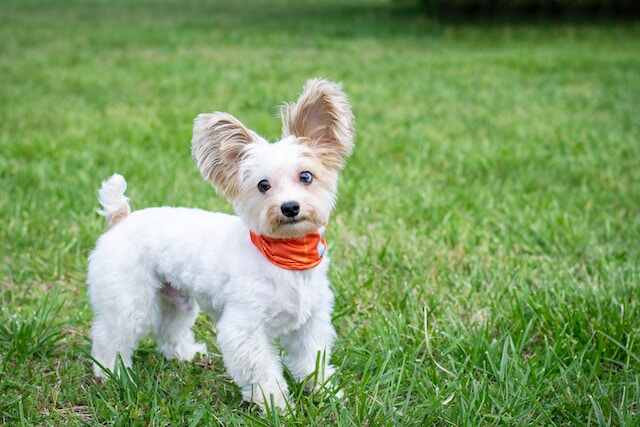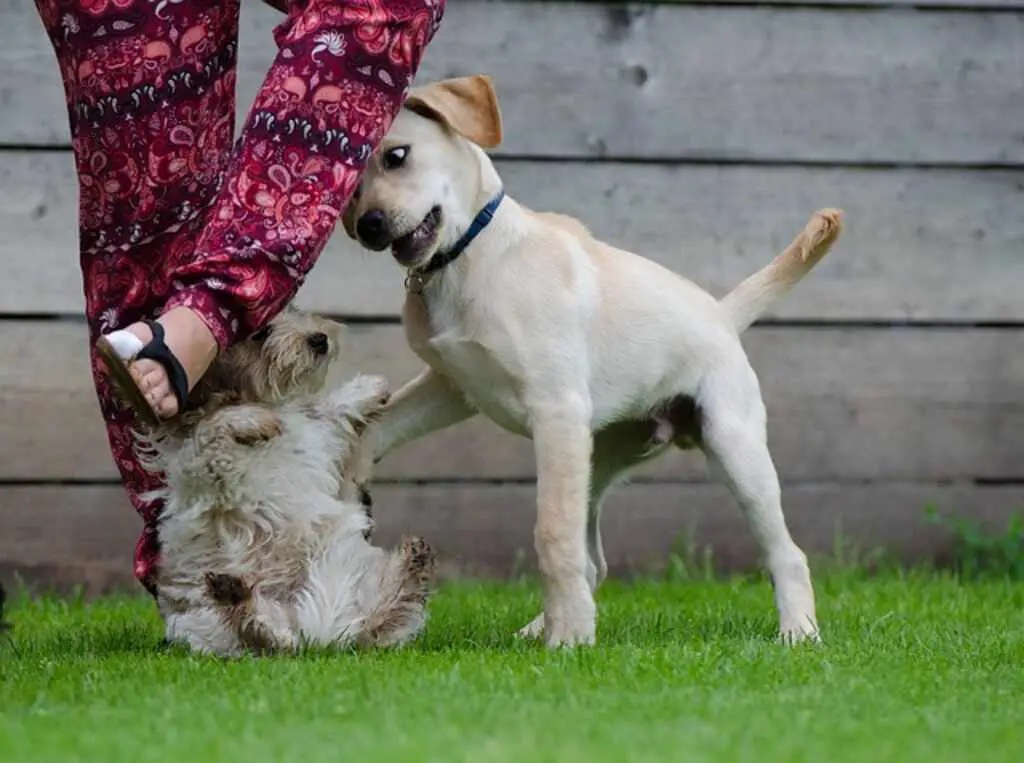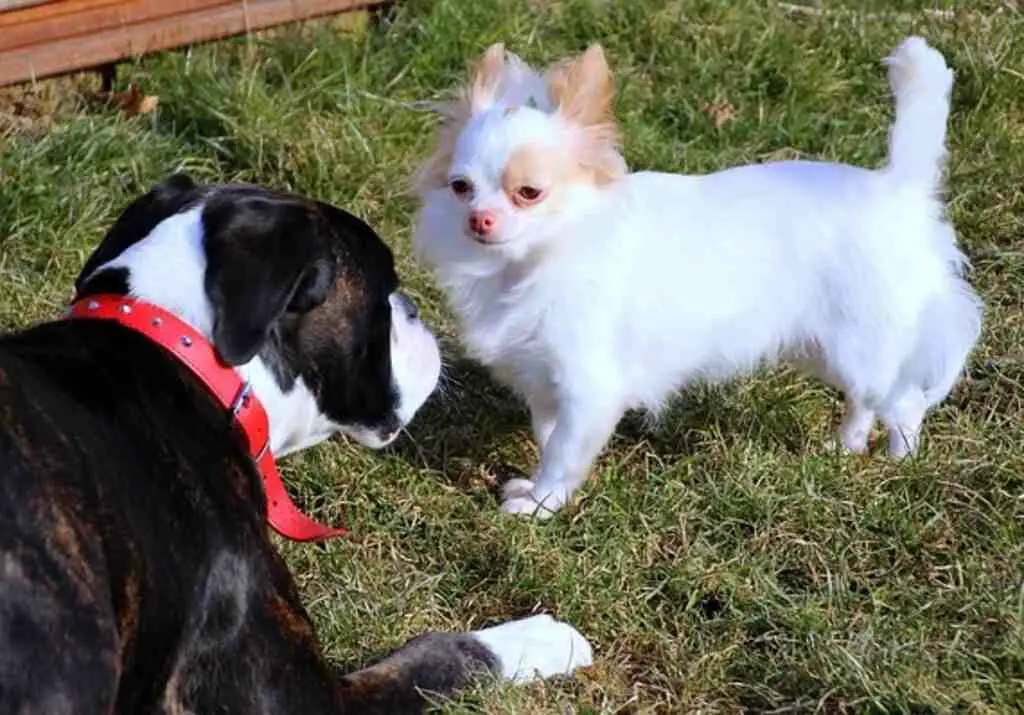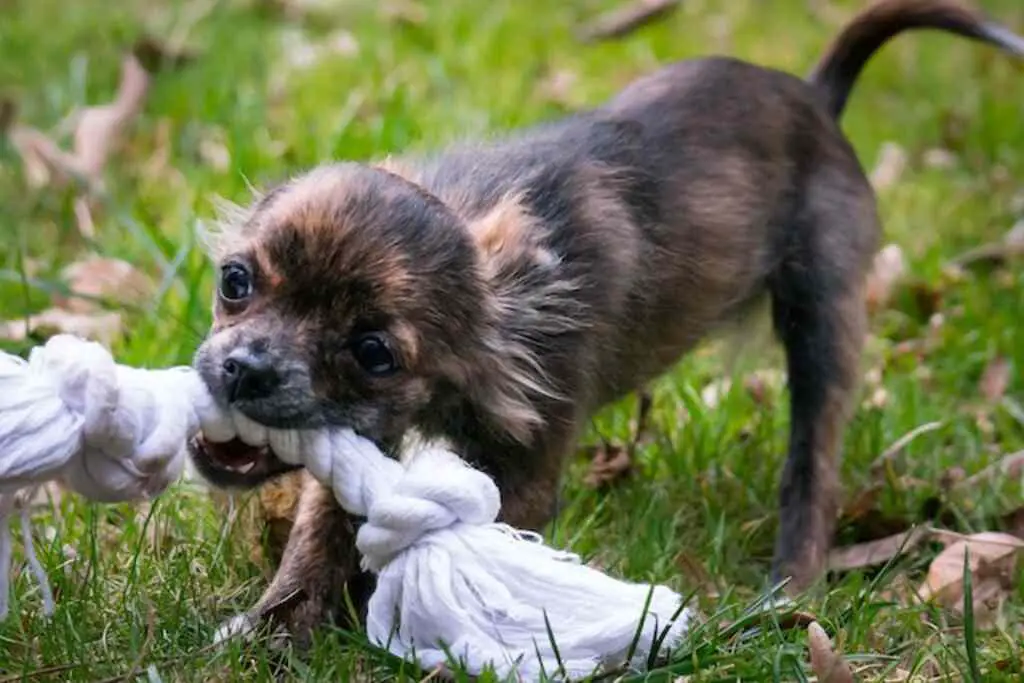If you’re a pet owner, you know the importance of providing your furry friend with a safe and enjoyable outdoor space. But how do you go about creating a yard that is truly dog-friendly? In this guide, we will explore seven ways to transform your yard into a haven for your four-legged companion.
Whether you have a large or small yard, these tips are applicable to any space. From assessing the safety of your yard to choosing dog-friendly plants and incorporating water features, we’ve got you covered. So, let’s get started!
Key Takeaways:
- A dog-friendly yard is important for the well-being of your pet.
- Assessing the safety and accessibility of your yard is crucial before making any changes.
- Providing your dog with boundaries and secure fencing can prevent them from wandering off.
- Shade and shelter are important for your dog’s comfort and protection from the elements.
- Choose dog-friendly plants and landscaping to create an aesthetically pleasing environment.
- Designated play areas and exercise spaces are essential for your dog’s physical and mental health.
- Incorporating water features can provide your dog with a fun and refreshing activity.
- Ensure your yard is free from harmful substances and hazards to keep your dog safe.
- Regular maintenance and upkeep are necessary to maintain a dog-friendly yard.

How To Make Your Yard Dog-Friendly?
To make your yard dog-friendly, consider installing a fence or creating a designated play area for your dog. Provide shade and water sources, and choose pet-safe plants and materials. Keep your yard clean and free of hazards, and consider adding toys and agility equipment to keep your dog entertained. Regularly inspect your yard for potential dangers, and supervise your dog when they are outside to ensure their safety.
Assessing Your Yard’s Safety and Accessibility
When creating a dog-friendly yard, the first step is to assess its safety and accessibility. Your yard should be a secure space that is free from potential hazards for your furry friend. Here are some tips on how to make your yard safe for your dog:
Dog-Proofing Your Yard
Before you let your dog roam free in the yard, it’s important to make sure that the area is safe and secure. Start by inspecting the yard for any potential hazards such as sharp objects, poisonous plants, or chemicals that may harm your dog. Remove any items that are not dog-friendly and secure any hazardous materials such as fertilizer or pesticides in a safe location that your dog cannot access.
Create a Safe Outdoor Space for Dogs
Ensure that your yard is properly fenced to prevent your dog from wandering off or getting lost. The fence should be tall enough to prevent jumping or climbing, and the gate should be secure with a latch that your dog cannot open. Check the fence for any damage, holes or gaps that your dog can escape through. Cover any gaps or holes with chicken wire or a similar material that your dog cannot chew through.
Assess Yard Safety for Dogs
Examine the terrain of the yard to ensure your dog’s safety. Check for any uneven areas, holes, or dips in the ground that your dog may trip on or fall into. If you have a pool, ensure that it is properly fenced and that your dog cannot get near it. Place a cover over the pool when not in use to prevent your dog from accidentally falling in.
By assessing your yard’s safety and accessibility, you can prevent accidents and create a secure outdoor space for your dog to enjoy. Stay tuned for more tips on how to make your yard dog-friendly.
Creating Boundaries and Fencing Options
Creating a secure and enclosed area is crucial for keeping your dog safe in the yard. A well-designed fence not only prevents your dog from wandering off, but it can also prevent other animals from entering your yard and potentially endangering your pet.
Dog-Friendly Fencing
When selecting a fence for your yard, it’s important to choose one that is suitable for dogs. Some fences may have gaps that small dogs can escape through or may be too high for some dogs to jump over. Additionally, make sure the fence is sturdy enough to withstand your dog’s playful activities and won’t be damaged easily.
Here are some dog-friendly fencing options to consider:
| Option | Description |
|---|---|
| Wooden Fence | This classic option is versatile and can be customized to fit the size and design of your yard. It’s important to note that wooden fences can require more maintenance than other options and may be prone to rotting or warping over time. |
| Chain Link Fence | A chain link fence is a durable and cost-effective option that provides visibility and airflow. It’s important to choose a fence with a small weave to prevent small dogs from escaping. |
| Vinyl Fence | Vinyl fences are low-maintenance, weather-resistant, and come in a variety of colors and designs. However, they may not be as sturdy as other options and can crack or become brittle over time. |
Boundary Options for Dogs
In addition to fencing, there are other options for creating boundaries in your yard that can keep your dog safe and contained. Here are some boundary options to consider:
- Wireless pet fence: This type of fence uses a radio signal to create an invisible boundary for your pet. When your dog approaches the boundary, they will receive a warning beep or static correction to discourage them from leaving the designated area.
- Boundary flags: These flags can be placed along the perimeter of your yard to visually indicate where your dog’s boundaries are.
- Hedge or shrubbery: Planting a hedge or shrubbery around the perimeter of your yard can create a natural and aesthetically pleasing boundary for your dog.
By selecting the right fencing and boundary options for your yard, you can create a safe and secure outdoor space for your furry friend to enjoy.

Providing Shade and Shelter
When designing a dog-friendly yard, it’s important to provide plenty of shade and shelter to protect your pup from the elements. This will not only keep them comfortable, but it can also prevent heat stroke and other heat-related illnesses.
One option is to provide a covered area, such as a patio or pergola, where your dog can relax in the shade. Another option is to incorporate shade trees or shrubs into your landscaping to create natural shade.
Pro tip: If you choose to plant trees or shrubs, be sure to research which plants are safe for your dog. Some plants, such as azaleas and lilies, can be toxic to pets.
In addition to shade, it’s important to provide a dry and comfortable outdoor shelter for your dog to rest and protect themselves from rain or snow. This can be a dog house, a covered area with a raised floor, or even a covered porch or deck.
By providing shade and shelter, you can create a comfortable and safe outdoor space for your furry friend to enjoy.
Choosing Dog-Friendly Plants and Landscaping
When it comes to creating a dog-friendly yard, selecting the right plants and landscaping features can make all the difference. Not only can they enhance the aesthetics of the yard, but they can also help keep your furry friends safe. Here are some tips on choosing dog-friendly plants and landscaping:
1. Opt for Non-Toxic Plants
Dogs can be curious creatures and may be tempted to nibble on plants in the yard. To avoid any mishaps, choose non-toxic plants that won’t harm your pet if ingested. Some pet-safe plant options include marigolds, sunflowers, and petunias.
2. Avoid Thorny Shrubs and Bushes
Thorny shrubs and bushes are not only painful for dogs, but they can also lead to injuries such as cuts and scratches. To keep your pets safe, choose shrubs and bushes with soft, non-prickly leaves such as viburnum or dogwood.
3. Create a Path for Your Dog
Design a designated path for your dog to follow through your yard. This will not only provide a clear walking route for your pet but also prevent them from trampling your plants.
4. Consider a Dog-Friendly Turf
If you’re tired of muddy paws and worn-out grass from your pet’s playtime, consider installing a dog-friendly turf. These synthetic turf options are designed to withstand heavy pet traffic, and many are also antimicrobial and easy to clean.
5. Add a Splash of Color
Adding colorful flowers and plants to your yard not only enhances the aesthetics of your landscape but can also provide mental stimulation for your pets. Consider planting pet-safe flowers such as roses, daisies, and zinnias to add a pop of color to your yard.
6. Incorporate Interactive Features
Adding interactive features to your yard can provide your pet with mental and physical stimulation. Consider incorporating features such as a shallow pool or a digging pit lined with rocks.
7. Keep Your Yard Clean
Regular yard maintenance is important to keep your space dog-friendly. Keep the lawn mowed, trim back any dead foliage, and regularly clean up after your pet to ensure a healthy environment for both your dog and your yard.

Designing Dog Play Areas and Exercise Spaces
Dogs need plenty of exercise and playtime to stay happy and healthy. To create a dog-friendly yard, it’s important to designate specific areas for play and exercise. Here are some tips on how to design the perfect dog play area:
- Choose an open, level area for play that is free of hazards such as sharp objects or toxic plants.
- Install a durable, non-toxic surface such as artificial turf or rubber matting to protect your dog’s paws.
- Provide plenty of shade and water to keep your dog cool and hydrated during playtime.
- Include interactive toys such as fetch balls, Frisbees, and obstacle courses to keep your dog entertained and mentally stimulated.
- Make sure your play area is securely fenced to prevent your dog from wandering off and getting lost.
In addition to a designated play area, it’s also important to create an exercise space for your dog. Here are some tips on how to design the perfect exercise space:
- Choose a larger, open area for running and playing, such as a fenced yard or nearby park.
- Make sure your dog is properly leashed or contained during exercise to prevent them from running into traffic or getting lost.
- Provide plenty of water and rest breaks during exercise to prevent your dog from overheating.
- Incorporate agility equipment such as hurdles, tunnels, and weave poles to challenge your dog and enhance their physical abilities.
- Switch up your exercise routine frequently to keep your dog engaged and avoid boredom.
By following these tips and designing the perfect play and exercise areas for your dog, you can provide them with the outdoor space they need to thrive.
Incorporating Water Features for Dogs
Dogs love playing and splashing around in water, and incorporating water features into your yard can provide a fun and stimulating environment for them. However, it is important to choose options that are safe and practical for your furry friends. Here are some ways to incorporate water features into your dog-friendly yard:
1. Dog-Friendly Pools
If you have space and budget for it, you can install a pool specifically designed for dogs. Dog-friendly pools are typically shallow and have slip-resistant surfaces to prevent accidental slips and falls. You can also add features such as ramps and steps to make it easier for your dog to access the pool.
2. Splash Pads
Another fun water feature for dogs is a splash pad. These are typically made of durable materials that can withstand your dog’s claws and teeth. You can install a permanent splash pad or opt for a portable one that can be easily set up and stored away.
3. Water Fountains
A water fountain can provide a source of fresh, clean water for your dog while also adding a decorative element to your yard. Look for fountains with dog-friendly features such as adjustable water flow and splash guards that prevent water from splashing outside the fountain.
4. Dog-Safe Ponds
If you already have a pond in your yard or are thinking of adding one, make sure it is safe for your dog. Avoid using toxic chemicals such as pesticides and fertilizers around the pond and ensure that the water is regularly tested and treated to prevent the growth of harmful bacteria.
5. Mist Sprayers
For a more unique water feature, consider adding mist sprayers to your yard. These can be set up on a timer or remote control and provide refreshing mists of water that your dog can play and cool off in.
No matter what water features you choose to incorporate into your yard, always supervise your dog while they are using them to ensure their safety.

Avoiding Harmful Substances and Hazards
As a pet owner, it’s important to be aware of harmful substances and hazards that may be present in your yard. By taking simple precautions, you can keep your dog safe and healthy while enjoying the outdoors.
Toxic Plants
Many common plants can be toxic to dogs, including azaleas, lilies, and tulips. Check your yard for any potentially harmful plants and remove them if necessary. If you’re unsure whether a plant is safe for your dog, consult with your veterinarian or a plant expert.
Hazardous Substances
Chemicals such as fertilizers, pesticides, and herbicides can be hazardous to your dog’s health if ingested. Keep these substances out of reach and use pet-friendly options whenever possible. When applying these substances, be sure to read the label and follow safety precautions.
Sharp Objects
Broken glass, nails, and other sharp objects can cause serious injuries to your dog’s paws. Be sure to regularly scan your yard for any potential hazards and remove them promptly. Keep your dog’s nails trimmed to prevent snagging on sharp objects.
Wildlife
While observing wildlife can be enjoyable, it’s important to remember that wild animals can carry diseases and pose a threat to your dog’s safety. Keep your dog on a leash and supervise them while they’re outside to prevent any encounters with wildlife.
Birds
Birds can be a nuisance for pet owners, especially when it comes to dog food and water. To keep birds away from your dog’s food and water, consider using covered feeding dishes or elevated platforms that are inaccessible to birds. Additionally, avoid leaving food and water outside for extended periods of time to prevent attracting birds.
Ensuring Dog-Friendly Maintenance and Upkeep
Keeping your yard dog-friendly requires consistent maintenance and upkeep. However, it’s important to ensure that the products and methods used do not harm your pet. Here are some tips for maintaining a pet-friendly yard:
Pet-Safe Lawn Care
When it comes to lawn care, choosing pet-safe products is crucial. Avoid using chemicals such as herbicides, pesticides, and fertilizers that can be harmful to dogs. Instead, opt for organic and natural products that are safe for pets. Consider using compost and mulch in place of chemical fertilizers to promote healthy soil and grass growth.
Regular Cleanup
Frequent cleanup is essential for maintaining a dog-friendly yard. This involves picking up pet waste regularly to prevent the buildup of bacteria that can be harmful to both pets and humans. Additionally, regularly sweep or rake away any debris, fallen leaves, or branches that could pose a hazard to your pet’s safety.
Maintaining Boundaries and Fences
Regularly inspecting and maintaining your fencing options can prevent any potential entry or escape points for your pet. Check for holes, weak spots, and any damage that may have arisen, and make any necessary repairs. This ensures that your pet remains safely within the designated boundaries of your yard.
Proper Storage of Chemicals and Tools
It’s important to properly store all chemicals and tools used in yard maintenance to prevent ingestion or injury to your pet. Keep all hazardous products out of your pet’s reach in a secure location such as a locked cabinet or shed.
Seasonal Maintenance
Make sure to adjust your yard care regimen according to the seasons. For example, during colder months, sand and ice melters are commonly used, but they can cause irritation and chemical burns to your pet’s paws. Avoid using these products or consider using booties to protect your pet’s feet. Additionally, keeping a well-manicured yard during the summer months can prevent any potential hiding places for pests such as ticks and fleas.
Conclusion
Creating a dog-friendly yard is essential for pet owners who want to provide a safe and enjoyable outdoor space for their furry friends. By following the tips discussed in this article, you can transform your yard into a dog-friendly oasis that your pet will love.
Remember to assess your yard’s safety and accessibility, create boundaries and fencing options, provide shade and shelter, choose dog-friendly plants and landscaping, design dog play areas and exercise spaces, incorporate water features, avoid harmful substances and hazards, and ensure pet-friendly maintenance and upkeep.
How To Keep Birds Away From Dog Food And Water?
While creating a dog-friendly yard, it’s important to consider the potential presence of birds who may be attracted to your pet’s food and water. To keep birds away from your dog’s food and water, you can try the following:
- Place the food and water bowls in an area that is not easily accessible to birds, such as under a covered patio or in a fenced-in area.
- Cover the food and water bowls with a mesh cover or dome to prevent birds from accessing them.
- Hang wind chimes or other noisy decorations near the food and water area to deter birds from coming too close.
- Regularly clean the food and water bowls to avoid attracting insects and other pests that may also attract birds.
By taking these simple steps, you can help ensure that your dog’s food and water remain safe and free from unwanted bird visitors.

FAQs
Can I make my yard dog-friendly without a fence?
While having a fence can provide added security and boundaries for your dog, it is possible to create a dog-friendly yard without one. There are other options available such as using natural barriers, creating designated play areas, and training your dog to stay within certain boundaries.
Are there specific plants that are dangerous for dogs?
Yes, there are certain plants that can be toxic to dogs if ingested. It’s important to research and choose dog-friendly plants for your yard. Some common plants to avoid include lilies, azaleas, and daffodils. Consult with a veterinarian or a horticulturist for a comprehensive list of toxic plants to dogs.
How can I provide shade for my dog in the yard?
There are several ways to provide shade for your dog in the yard. You can use shade trees, create shaded areas with umbrellas or canopies, or even build a doghouse with a shaded area. It’s important to ensure that the shade is accessible and comfortable for your dog to relax in.
What are some common hazards in the yard that I should be aware of?
Some common hazards in the yard include toxic plants, chemicals such as pesticides and fertilizers, sharp objects, and potential escape routes. It’s important to regularly inspect your yard and take necessary measures to eliminate or minimize these hazards to keep your dog safe.
How often should I maintain my dog-friendly yard?
Regular maintenance is essential to keep your dog-friendly yard in good condition. This includes mowing the lawn, trimming plants, removing debris, and regularly checking for any hazards or potential issues. The frequency of maintenance will depend on factors such as climate, season, and the specific needs of your yard.


